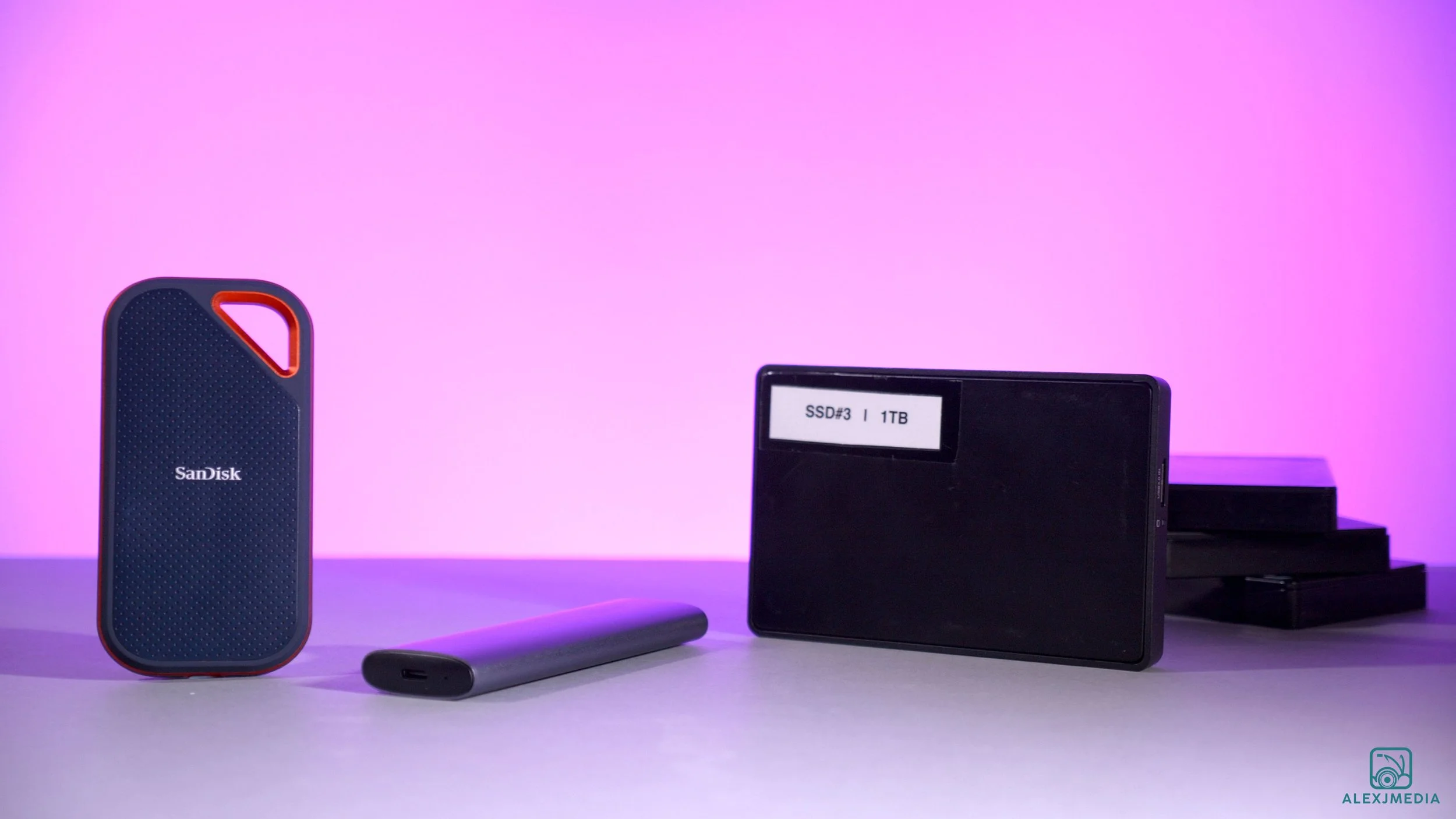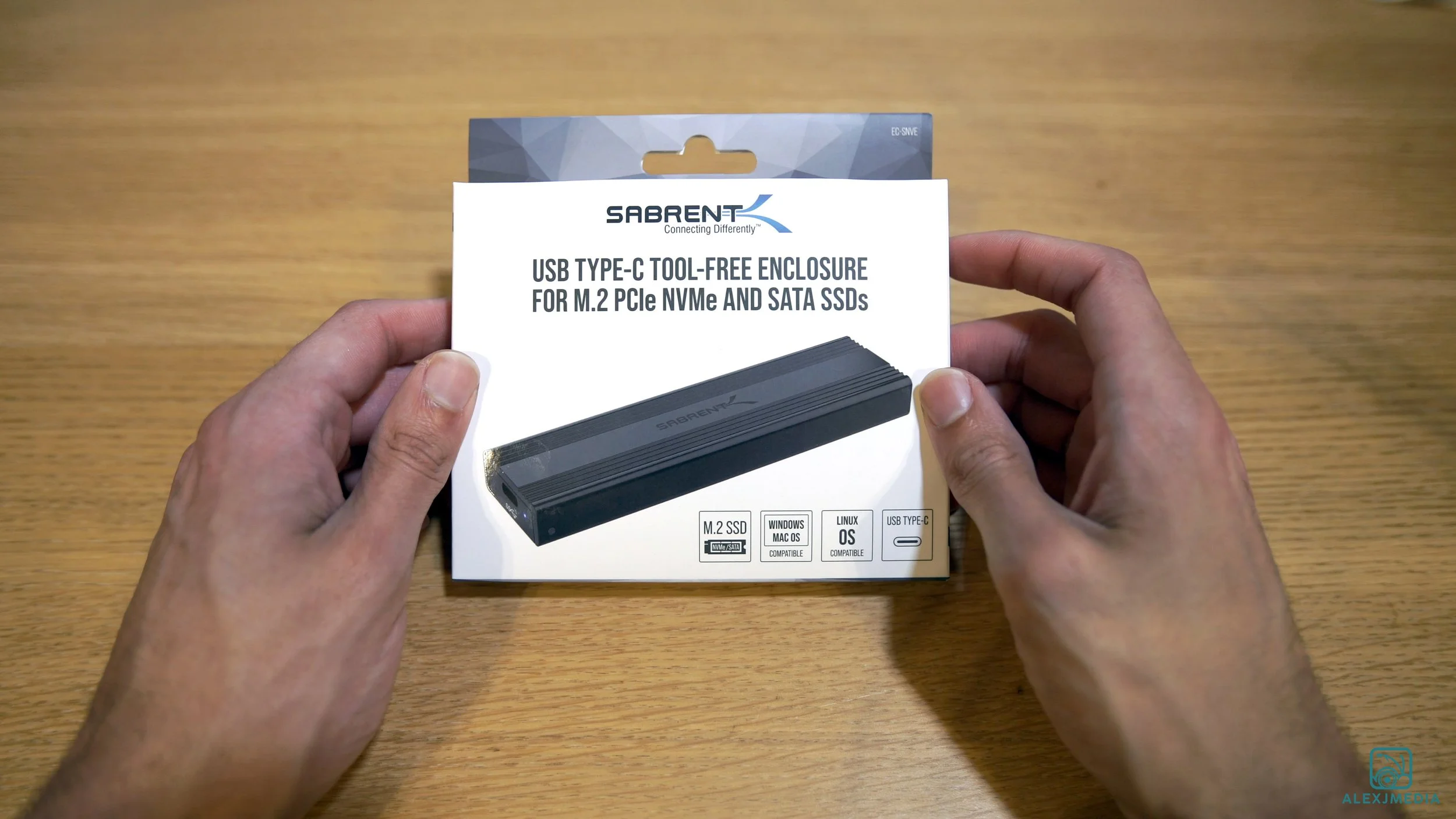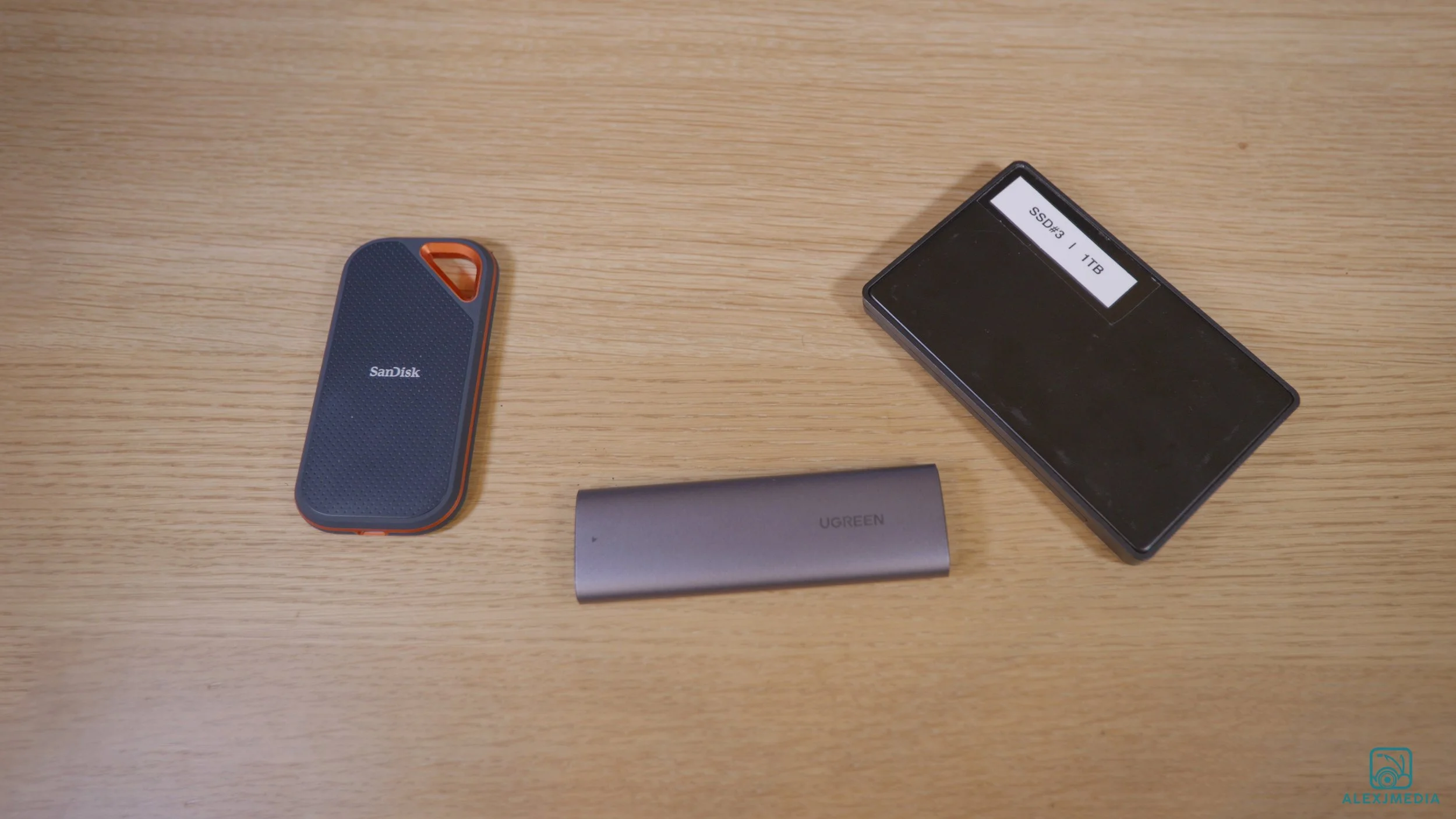DIY NVMe VS Branded SSD (UGREEN, Sabrent, Sandisk Review)
To DIY or not to DIY
There’s no shortage of storage options for our modern-day computing. The retina MacBook Pros of 2012 paved way to our current solid-state expectations; faster speeds, better efficiency, higher durability… The costs of solid state storage has also been on the fall with some sources predicting solid state prices to fall below hard disk drive prices in 2026 (blocksandfiles, 2021).
Back in the later 2000s, I would often buy 2.5” SSDs and pair them with USB3 SATA enclosures. The speeds for those times were outstanding. I was even able to boot operating systems installed on external SSDs on my 2007 MacBook - and that was using USB 2.0 speeds!
Fast-forward to 2023 and today’s computers and operating systems are much more data hungry. Higher resolution media and greater bit depth files mean our storage needs are growing in quantity and speed requirements.
As M.2 NVMe drives have become very affordable, the promise of next generation high performance is tempting. I decided to buy an M.2 SSD enclosure and try out an external NVMe drive. My thought was that a ‘DIY’ drive setup would perform well and be more cost effective than buying a ‘branded’ SSD option. The performance of the drives and enclosures I tested was underwhelming.
The first enclosure I bought was by UGREEN. The metallic design matched well with the MacBook Pro. The NVMe enclosure felt small and light enough however this tool-less design did have a fragility about it. Initially, I installed a Crucial P5 drive but I had issues getting the drive to format. I returned the drive as ‘dead on arrival’ but this was somewhat of a red flag with this medium. The second drive I tested was a Western Digital Blue SN550. The speed test results were good to begin with. Black magic Disk Speed test reported 898Mb/s read 876Mb/s write. I was pleased with these results until I started using the drive properly. The first file I copied over was around 60Gb. The estimated time started at 1 minute. That estimate then began to rise. After around 40 seconds, the estimated time was up to 6 minutes. Re-tests in the Blackmagic benchmark revealed that the drive-enclosure combo had very inconsistent test results (ranging from 74Mb/s to 800Mb/s).
At first, I put these issues down to ‘thermal throttling’. I bought a second M.2 NVMe enclosure by Sabrent. This model seemed to have a better thermal design; hosting heat pads and essentially being a metal heatsync. I started to test this second enclosure and was again disappointed with the results. The speed test reported 929Mb/s read 528 Mb/s write on a good run. On consecutive tests, lower scores of 59Mb/s read 350Mb/s write were achieved.
I found that for some uses, older 2.5” SATA SSDs are more predictable. At least the slower speeds (300Mb/s - 450Mb/s) are predictable and consistent. I will be buying some more 2.5” SSDs of larger capacities for having larger files quickly available.
In the end, my search for external NVMe solutions ended with buying a SanDisk Extreme Pro Portable SSD. This was slightly more expensive than the DIY setups. I found the reliability and performance to be excellent. Blackmagic Disk Speed Test reported speeds of 900+Mb/s read and write. This was stable and consistent when the drive was cold and hot. Even when testing the drive filled to 80% capacity, the speed test results were above 800Mb/s.
The SanDisk Extreme Pro SSD also has a good security feature called the ‘SanDisk Security App’. From factory setting, the drive has a partition containing a security unlocking application. This runs on both Windows and MacOS. This app will run without installation so should work fine if you need to unlock the device on a friend’s computer. Only once the correct unlocking password has been entered will the mass storage partition of the drive be mounted by your host OS. There’s also the option to instal a copy of the software within your OS enabling ‘keychain’ or auto-unlocking based on your local user account.
If you want a fast reliable portable SSD drive, I recommend looking into the SanDisk options. There are a few options to choose from varying in capacity and quoted read/write speeds. I think external NVMe enclosures have some way to go yet before they are usable for important applications.




